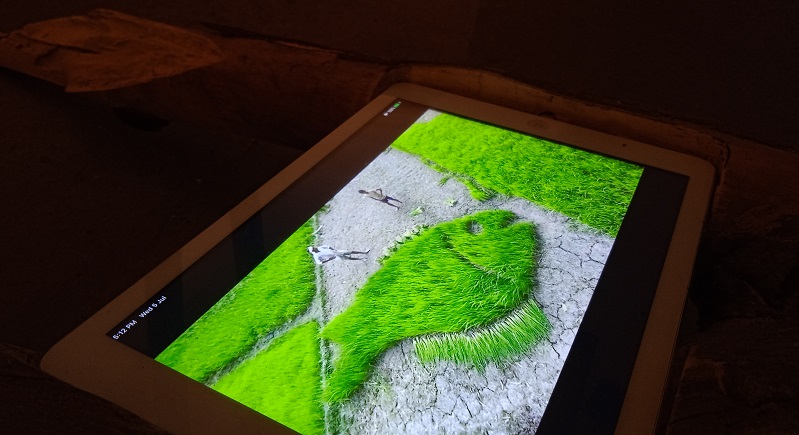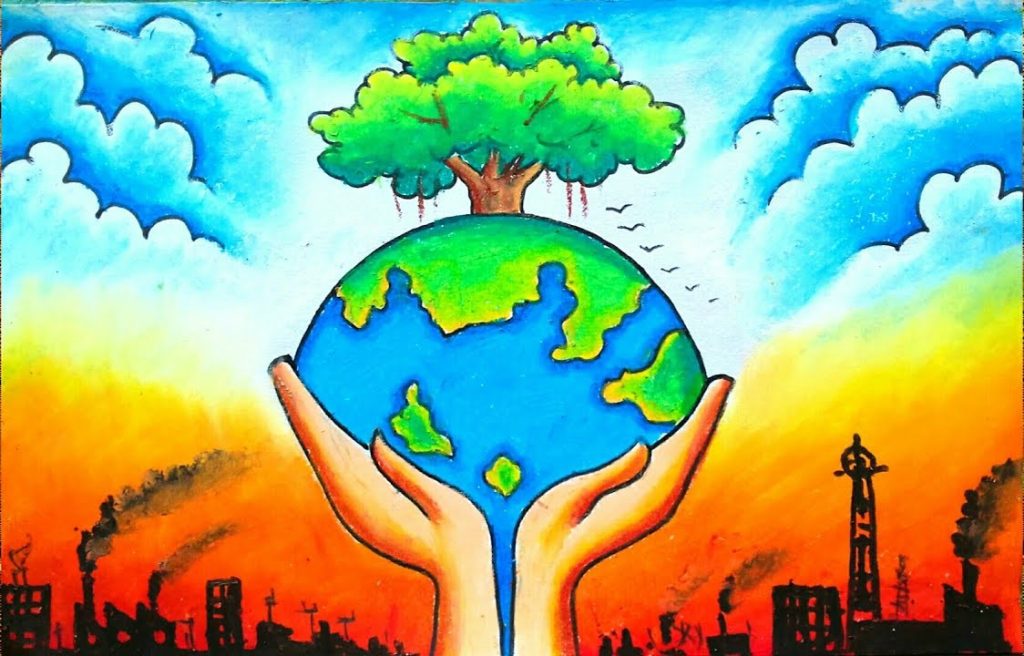Climate change is an enduring problem on our planet Earth. Most countries are affected by this climate change, and many are on the edge of collapse. Suddenly, the weather will change, and heavy rain will bring flash floods, even in well-developed city settings. Climate change is not a new term, an experience of ‘someone’ from another country, or not even an unknown matter for everybody, regardless of their geographical location.
We know about climate change and climate change protections against world forums and unions, big nations’ policies, and government actions against climate change prevention. The core question concerns the action taken to manage climate change, which is always in the air of activism. As living species on Earth, our home is now on the edge of destruction, and our collective responsibility is needed to prevent the devastation.
As a subject of human life and society, art is in the middle of turmoils created by our desire and greed. Are we doing the art to save ourselves or the planet, or is art for art forever? We are reading many news from around the world that use art as a platform to protest against climate change and policies. The pressing need to protect our environment from the existential threat of climate change has spurred a new wave of engagement. A particularly audacious fraction of these climate activists has drawn notice from the media by aiming at well-known works of art.
A recent demand for climate action painted on a wall next to a Civil War exhibit at the National Gallery of Art in Washington, D.C., by a climate protestor garnered news. Targeting an image of King Charles III, climate activists from the organization “This is Rigged” mounted a daring protest at the National Gallery of Scotland in Edinburgh on Wednesday. The demonstration was intended to highlight the government’s position on new gas and oil projects and call for more substantial action to combat fossil fuels.
Two climate activists tied their hands to the glass of a Monet artwork at the National Museum in Stockholm, Sweden, and painted it scarlet. By name tags, the two ladies, Emma and Maj, splattered paint over the bright 1900 French Impressionist painting The Artist’s Garden at Giverny, which features pink and purple irises. Two activists from the German environmental group Letzte Generation (Last Generation) bravely protested against climate change by sticking their hands to the frame of Raphael’s famous “Sistine Madonna” at the Old Masters Picture Gallery in Dresden. This action seriously damaged the priceless artwork. The activists now face OK requests from the Dresden prosecutor’s office, which holds them accountable for “community damage to property.”
We should ask why these climate protests take place in the art world. Why are artwork and other monuments facing this protest? They maintain prominent places in human culture and protest against the great artwork, bringing global attention to the raised issue. But the question is why these artworks are vandalised for global attention, and why does it matter in contemporary situations? Some of the arguments about this matter clearly understand the urgency of the subject and the international attention.
What do you think about paintings or artwork that would save our earth from the catastrophe of climate change? What is the artistic response to this matter? Now, galleries and museums are announcing grants for doing climate change artwork. In Indian artistic practice and contemporary shifts of creative thought, climate change is a topic for art production from Kerala to Orissa to the Northeastern part of India.

Anga Art Collective (f. 2010) is an initiative of artists, writers and researchers from the North-East Part of India, which was founded for engrossed in critical reflections about visuality culture and materiality based on Assam’s geographic and social terrain. Anga Art Collective started the Khaal Gaon art project as part of their evolved project displayed in the Dhaka edition of the exhibition. In this project, the Anga team brought many elements from the Northeast, such as interactive vehicles, seeds, books, dried fruits and fish, drawings and drawing materials, dried chilly and many others.
Art for Save Planet Earth
A painting that advocates for preserving the environment is significant because it can arouse viewers’ emotions, motivate them to take action, and increase awareness. Art has a unique power to draw viewers in and stimulate contemplation. Paintings with a green theme can draw attention to environmental problems such as pollution, deforestation, habitat destruction, and climate change. The painting can enlighten visitors about our planet’s problems by powerfully illustrating these problems visually.
Paintings depicting nature’s beauty and threats can arouse feelings of urgency, compassion, and concern. The picture has the power to inspire viewers to take action to safeguard the environment and make positive changes in their own lives by appealing to their emotions. An inspiration source may be an artwork that promotes environmental preservation. It can draw attention to the natural world’s resiliency, beauty, and possibility for improvement. By highlighting the initiatives people and communities take to preserve the environment, the painting can encourage viewers to become involved and change their local communities.
A painting about preserving the planet Earth might utilise symbols like trees, animals, and natural landscapes to signify interconnection, biodiversity, and sustainability. Art frequently employs symbolism to communicate complicated ideas and themes. These visually appealing icons aid in conveying the significance of protecting the environment.
Art can endure and connect with a large audience. Long after it is made, people might be inspired and educated by a painting that spreads the message of protecting the environment. Whether hung in public areas, galleries, or museums, the artwork can remind future generations how important it is to protect the environment.
Art and climate change are two entirely different things. No one considers climate change and artwork the same, but art is part of climate change actions and inactions in the current global scenario. Art is an integral part of human life, like climate change. Changes in our living nature affect us more than we imagined, making our artwork often aware of these changes that occurred in our lives.
Is Attacking Art for Climate Action ‘Vandalism’? Experts Explain





